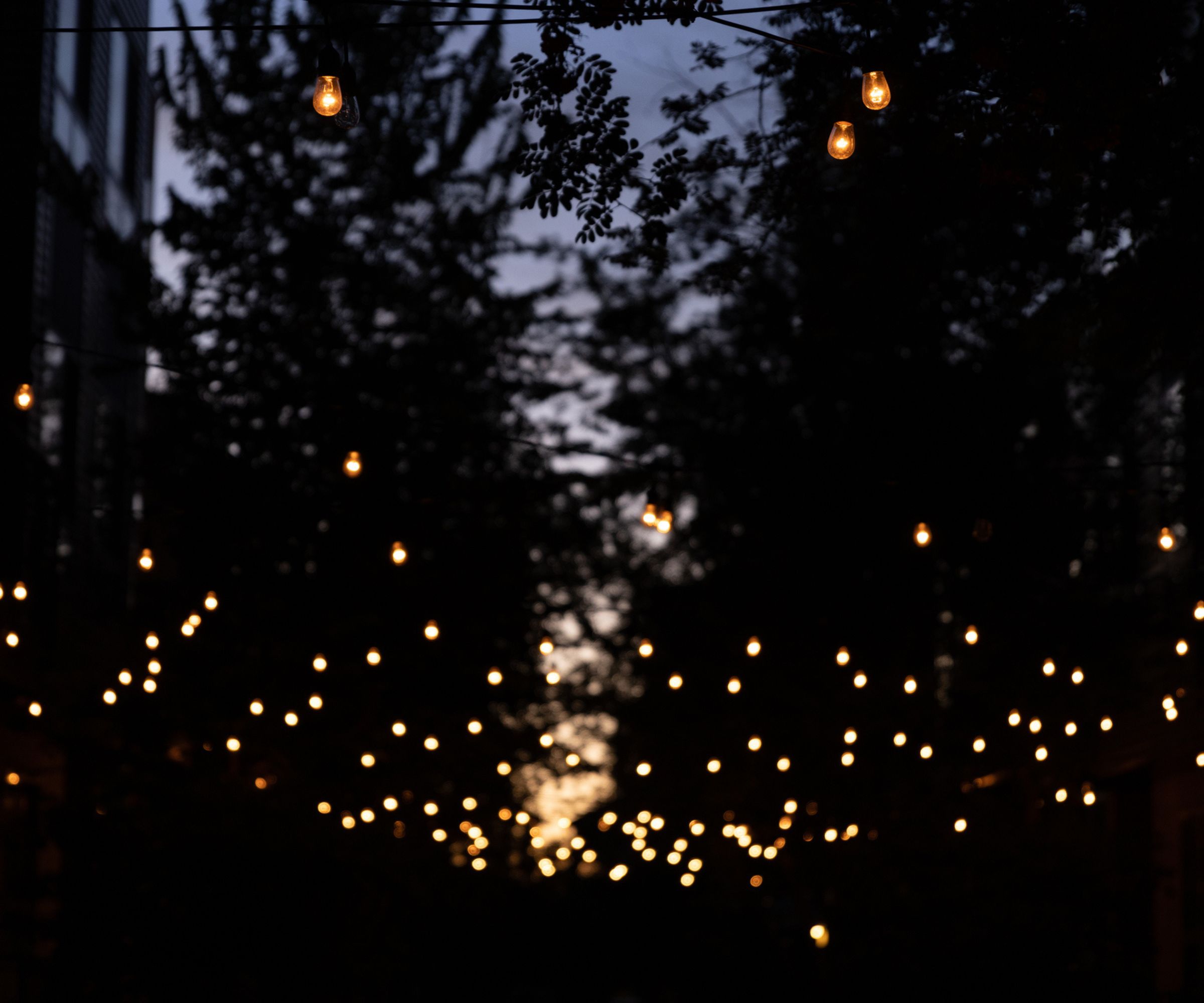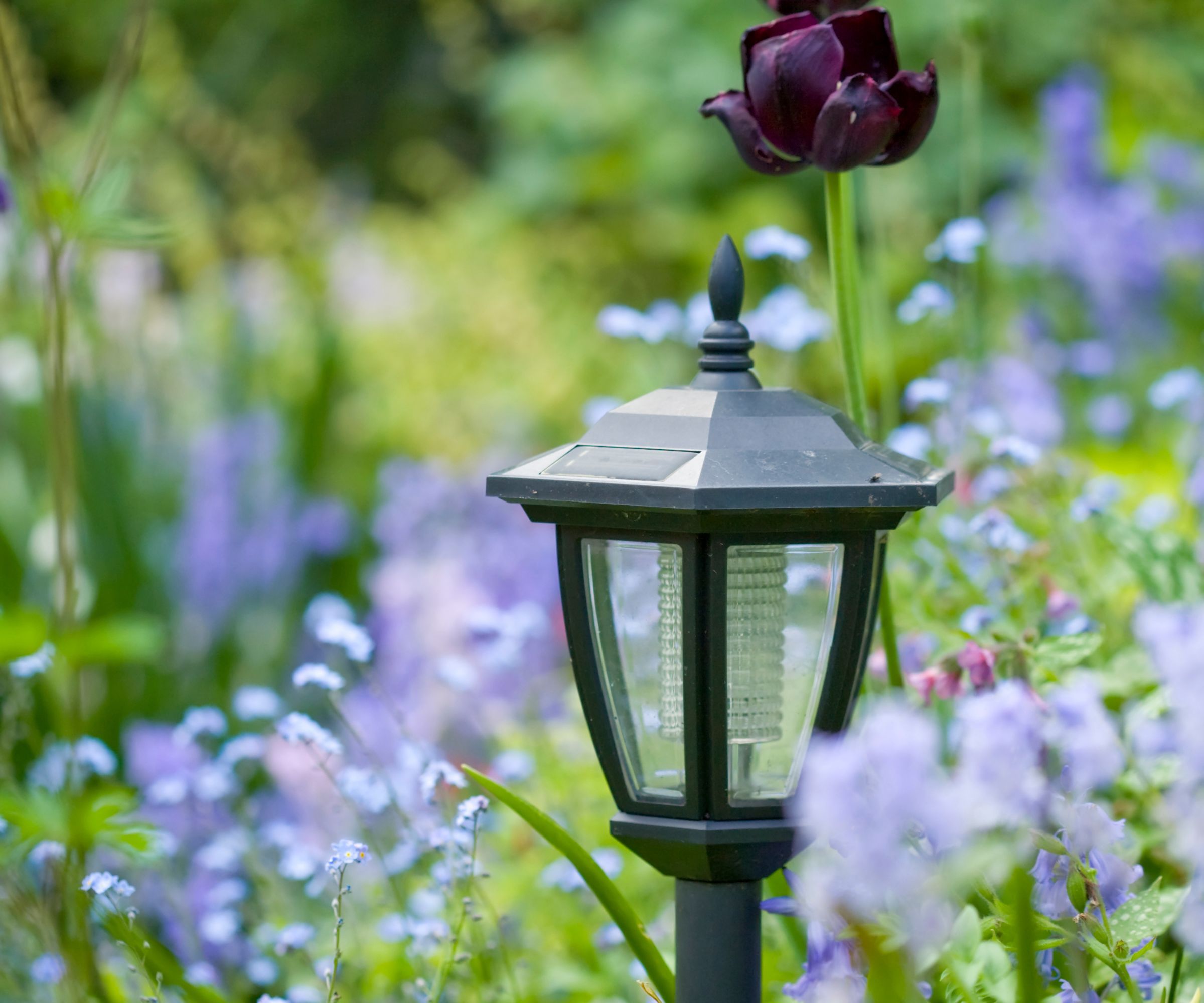
Solar lights can be a great way to light a garden. They're inexpensive, easy to install, and totally free to run. Yet these lights are notorious for running badly. They aren't bright enough, don't run for the whole night, and often break within weeks, which is why it makes sense to know how to buy solar lights.
However, sometimes it's a user error. There are a lot of poorly-made solar lights out there, but they often break because they've been badly installed.
I spoke to an outdoor lighting expert about the most common solar light mistakes, and how you can avoid them.
1. Putting solar panels in the shade

The first mistake is to put your solar panel in the shade. Solar panels are at their best in full sun, and if the panel is in the shade it won't work as well. This is a common mistake for two reasons.
The first is because solar panels can still pick up light in the shade, so they seem to be working. If you've ever found that your solar lights only work for a couple of hours in the evening, it's probably because they're getting some light, but nowhere near as much light as they need.
You should also double-check your solar panel placement throughout the day. What looks like the perfect sunspot for a solar panel in the morning might be completely in the shade by the evening.
2. Ignoring the solar panel angle

Another mistake is to ignore the angle of your solar panel. In summer, it should be angled flatter, so that it can take advantage of the sun being high in the sky. In winter, you should angle it around 45 degrees, as the sun is lower in the sky.
This won't lead to huge improvements, but it will help you eke out a couple extra hours' use from your solar lights. It's especially important if you live further north, where there's greater shortening of the day in winter, and it's more likely to be overcast.
3. Using the wrong lights for the job

One of the biggest mistakes people make with their solar lights is to buy the wrong lights for the job. Many people buy string lights for their patio expecting these lights to provide practical lighting. This will never work, because string lights are too dim by design - they're supposed to provide ambiance, not practical light. For the same reason you wouldn't use string lights to light your kitchen, you can't use them to light your patio.
The same effect can also be true in the opposite direction. Some people want ambient, relaxing lights, but install bright solar security lights which make the area look stark and overexposed.
If you're aiming for a beautiful ambiance, use string or rope lights. For relaxed but practical overhead lighting, use bright festoon lights or lanterns. For path lighting, use bright path lights of at least 200 lumens. If you need bright light for security, use a spotlight.
These bright Edison bulbs are perfect for pretty but practical patio lighting. Remote-controlled, you can turn your lights on and off and save a little energy.
These lights are excellent value, with a mounting kit and remote control included as standard.
This kit of four lights is perfect for lighting along a garden. It has two path lights and two spotlights to help you light your yard.
4. Ignoring IP and lumen ratings

IP and lumen ratings are crucial for finding good outdoor lights. An IP - or ingress protection - rating is a measurement of dustproofing and waterproof. The higher the IP rating, the better a set of lights can stand up to rain and snow. The best IP rating is IP69, but you don't need to go that high. Lighting expert Dara Greaney says 'IP65 is what you need for outdoor use.'
Lumens are a measure of how bright lights are - the higher the number, the brighter the light. String lights for ambiance can be very dim, between 10-30 lumens. For practical path lighting you need around 100-200 lumens. Dara adds that 'A good solar wall light will have 600-1000 lumens. A good post-top light is around 5000-8000 lumens.'
5. Falling for fake lumen numbers

However, solar light expert Dara Greaney says to be careful about lumen ratings. He told me that 'Solar lumen inflation is rampant. With powered lights, manufacturers need to be UL or ETL certified and they ensure the lumen count is accurate. With solar there are no rules, companies say whatever they want to get you to buy.'
This means that unless you're buying from big companies that are UL- or ETL-certified, the lumens you see listed for a set of lights may not be legitimate. You can still find good lights on Amazon, for example, but you should check for photo reviews to see how bright the lights are.
6. Buying lights without replaceable batteries

Many people lament that their lights are broken after a couple of years, but it's often the case that the lights are fine - the battery is the problem. Lots of the time, there's nothing wrong with the lightbulbs, solar panel, or wiring: the solar batteries have just come to the end of their life.
Dara Greaney says 'Lithium-ion batteries last about 7-10 years max, so be aware you will be replacing fixtures or batteries before then.'
Lots of solar lights seal off access to the battery to ensure the lights are watertight. However, there are a few lights out there with replaceable batteries, so you can replace the batteries when they inevitably run out.
This three-pack of lights is already excellent value, but my favorite feature is the replaceable batteries. When the batteries finally break, you can just replace them with a new set.
7. Forgetting to plan for the panel

Dara says that lots of people forget to plan for the solar panel, either for getting the best sun or for aesthetics.
He says 'Some solar lights are one piece and some are two piece with a wire to put the panel somewhere else. Pick carefully and know how much cord you get if 2 piece. Plan for the panel to be in the sun and in a place you are okay with the look.'
One of the best ways to hide the solar panel is to place it among dark ground cover plants, like black mondo grass, purple phlox, or bungleweed.
8. Using solar lights in the first place

Solar lights are an effective option for areas far away from the house, such as in trees at the bottom of the yard, or as security lighting above greenhouses or sheds. They're also a good value option if money and time are tight, and you don't have the free time or budget to wire in powered landscape lights.
However, landscape lights are much more reliable, and relatively easy to wire in, especially for patios and other areas close to the house. On top of that, Dara adds that in the long run, powered lighting can be cheaper. 'If you have power nearby that’s always better. The cost of replacing batteries and fixtures in solar lights outweighs the cost of electricity.'
There are lots of other little tricks to get more out of your solar lights. You can make them extra watertight by running clear weatherproof sealant around the plastic case of the solar panel. It's one of the best ways to make solar lights work in winter.







